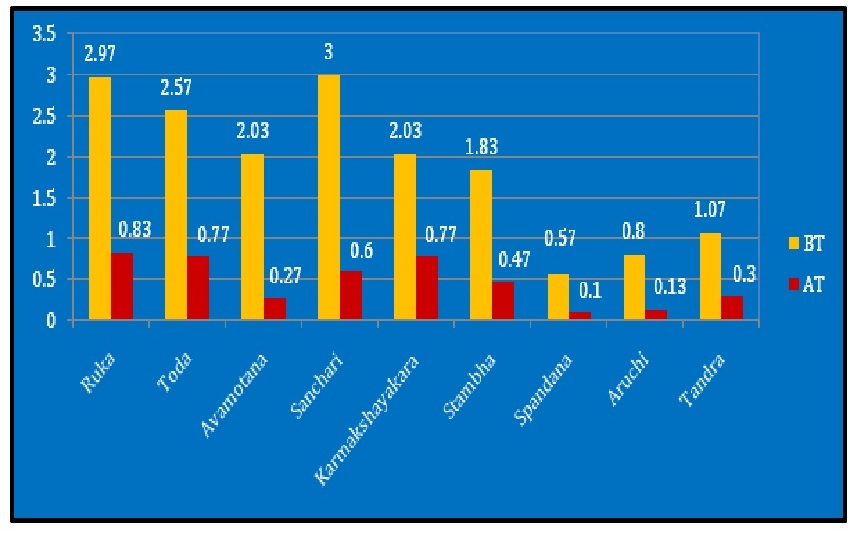A Comparative Study of Dashamooladi Nasya & Dashamooladi Ghana Vati in the Management of Vishvachi w.s.r to Cervical Spondylosis
Abstract
The advent of civilization and overuse of life modifying gadgets like cell phones, computers, etc. leads to greater incidence of neck pain worldwide, of which Cervical spondylosis is the prime cause, which is a natural ageing process characterized by sequence of degenerative changes in the spinal structure. In Ayurveda, it can be closely correlated with Vishvachi, which is a Nanatmaja vatavyadhi, in which there is restriction of movement in arms associated with Ruk, Stambha, etc. features. Aims and Objectives: 1. To study etiopathogenesis, symptomatology, and progress of Vishvachi w.s.r. to cervical spondylosis. 2. To assess the efficacy of Dashamooladi taila nasya and Dashamooladi ghana vati individually and compare the effect of both schedules clinically. Materials and Methods: After proper identification, the selected raw herbs are used for Taila (oil) preparation according to Taila paka vidhi for Nasya and Kwatha was made for oral medication. The study was carried out in two parts- a). Literary- Textual references from various books, journal and papers on Internet were studied. b). Clinical- After considering the selection criteria, a total of 60 patients were treated in two groups- i) Group A: 30 patients were treated with Dashamooladi taila nasya for consecutive 21 days preceded by Abhyanga (oleation) & Svedana (fomentation). ii) Group B: 30 patients were treated with Dashamooladi Ghana vati consecutively for 21 days. Scoring was done on the basis of 09 parameters and statistical analysis was done. Result: Group A patients showed marked effect on Avamotana, Sanchari, Spandana, Aruchi & moderate effect on Ruk, Toda, Stambha & Tandra. Group B showed marked effect on Toda, Stambha, Spandana; and moderate effect on Ruk, Avamotana, Sanchar. Conclusion: Dashamooladi yoga (Dashamoola, Bala, Masha) is used both for shamana and Nasya medicine. These are effective in Vata-kaphaja ailments, Sotha, Shula, etc., and possess Balya, Brimhana, Rasayana, Vrishya etc., qualities.
Downloads

Copyright (c) 2022 International Journal of Ayurveda and Pharma Research

This work is licensed under a Creative Commons Attribution-NonCommercial-ShareAlike 4.0 International License.






